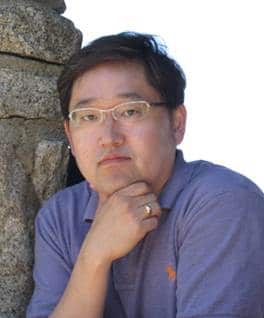- Professor of Chemistry, Queens College
- Affiliate Faculty, Nanoscience Initiative
Seogjoo Jang, Ph.D.
Affiliation
Queens College
Research Interests
The Jang group conducts theoretical and computational research on energy and charge transfer dynamics in nanoscale molecular and biological systems. The major focus is on quantitative understanding and description of dynamical quantum effects. The range of research includes theory development, large scale computation, modeling of complex spectroscopic data, and development of coarse-grained models. Major issues addressed in the research have significant implications for energy conversion and storage, sensing, and biological imaging.
Job History
- 2018 – 2021: Chair, Department of Chemistry and Biochemistry, Queens College
- 2012 – Current: Professor of Chemistry, Queens College
- 2010 – 2012: Associate Professor of Chemistry, Queens College
- 2005 – 2009: Assistant Professor of Chemistry, Queens College
- 2003 – 2005: Goldhaber Fellow, Brookhaven National Laboratory
- 1999 – 2002: Postdoctoral Research Associate, MIT
- 1994 – 1999: Ph.D., University of Pennsylvania
Publications
| Title |
|---|
S.J. Jang, Partially polaron-transformed quantum master equation for exciton and charge transport dynamics, Journal of Chemical Physics, 2022, 157, 104107. |
A.M. Levine, H. He, G. Bu, P. Ramos, F. Wu, A. Soliman, Js. Serrano, D. Pietraru, C. Chan, J. Batteas, M. Kowalczyk, S.J. Jang, B.L. Nannenga, M.Y. Sfeif, E.H.R. Tsai, and A.B. Braunschweig, Efficient Free Triplet Generation Follows Singlet Fission in Diketopyrrolopyrrole Polymorphs with Goldilocks Coupling, J. Phys. Chem. C, 2021, DOI: 10.1021/acs.jpcc.1c02737. |
S.J. Jang, I. Burghardt, C.-P. Hsu, and C.J. Bardeen, Excitons: Energetics and spatiotemporal dynamics, Journal of Chemical Physics, 2021, 155, 200401. |
S.J. Jang, A simple generalization of the energy gap law for nonradiative processes, Journal of Chemical Physics, 2021, 155, 164106. |
K. Ng, M. Webster, W.P. Carbery, N. Visaveliya, P. Gaikwad, S.J. Jang, I. Kretzschmar, and D.M. Eisele, Frenkel excitons in heat-stressed supramolecular nanocomposites enabled by tunable cage-like scaolding, Nature Chemistry, 2020, 12, 1157-1164. |
S.J. Jang, Effects of donor-acceptor quantum coherence and non-Markovian bath on the distance dependence of resonance energy transfer, Journal of Physical Chemistry C, 2019, 123, 5767-5775. |
M. Kowalczyk, N. Chen, and S.J. Jang, Comparative computational study of electronic excitations of neutral and charged small oligothiphenes and their extrapolations based on simple models, ACS Omega, 2019, 4, 5758-5767. |
D. Montemayor, E. Rivera, and S.J. Jang, Computational modeling of exciton-bath Hamiltonians for light harvesting 2 and light harvesting 3 complexes of purple photosynthetic bacteria at room temperature, Journal of Physical Chemistry B, 2018, 122, 3815-3825. |
J.H. Bak, S.J. Jang, and C. Hyeon, Implications for human odor sensing revealed from the statistics of odorant-receptor interactions, PLOS Computational Biology, 2018, 14, e1006175. |
S.J. Jang and B. Mennucci, Delocalized excitons in natural light harvesting complexes, Reviews of Modern Physics, 2018, 90, 035003. |
Robust and fragile quantum eects in the transfer kinetics of delocalized excitons between B850 units of LH2 complexes |
Seogjoo Jang and Changbong Hyeon. Kinetic model for the activation of mammalian olfactory receptor. Journal of Physical Chemistry B, 2017, 121, 1304 |
Seogjoo Jang and Gregory A. Voth. Non-uniqueness of quantum transition state theory and general dividing surfaces in the path integral space. Journal of Chemical Physics, 2017, 146, 174106 |
S. Jang, S. Hoyer, G. Fleming and K.B. Whaley, Generalized Master Equation with Non-Markovian Multichromophoric Förster Resonance Energy Transfer for Modular Exciton Densities, Phys. Rev. Lett., 2014, 113, 188102. |

